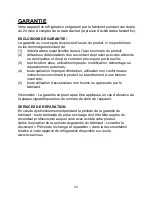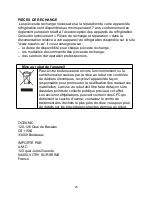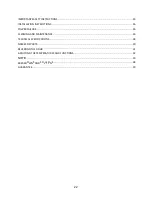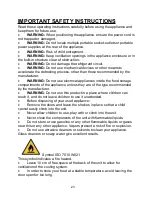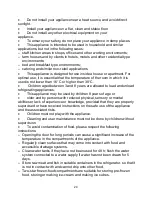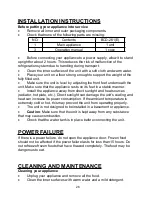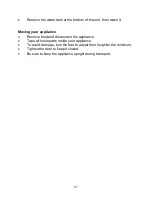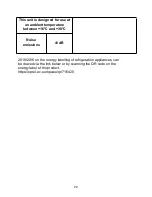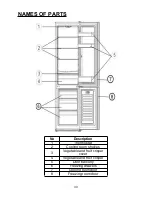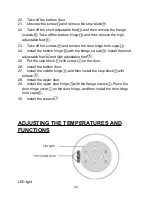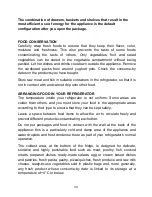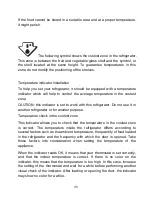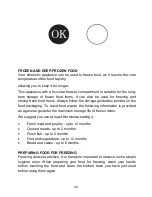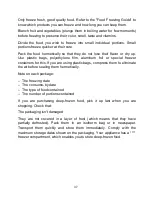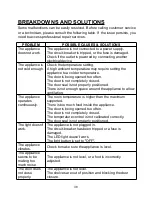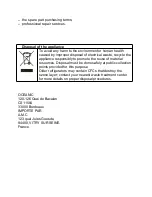
The combination of drawers, baskets and shelves that result in the
most efficient use of energy for the appliance is the default
configuration after you open the package.
FOOD CONSERVATION
Carefully wrap fresh foods to ensure that they keep their flavor, color,
moisture and freshness. This also prevents the taste of some foods
contaminating the taste of others. Only vegetables, fruit and salad
vegetables can be stored in the vegetable compartment without being
packed. Let hot dishes and drinks cool down outside the appliance. Remove
the cardboard packs from around yoghurt pots. Check the consume-by
dates on the products you have bought.
Store raw meat and fish in suitable containers in the refrigerator, so that it is
not in contact with and cannot drip onto other food.
ARRANGING FOOD IN YOUR REFRIGERATOR
The temperature inside your refrigerator is not uniform. Some areas are
colder than others, and you must store your food in the appropriate areas
according to their type to ensure that they can be kept safely.
Leave a space between food items to allow the air to circulate freely and
prevent different products contaminating each other.
Do not put packages and food in contact with the wall at the back of the
appliance; this is a particularly cold and damp area of the appliance and
water droplets and frost condense there as part of your refrigerator's normal
operation.
The coldest area, at the bottom of the fridge, is designed for delicate,
sensitive and highly perishable food such as meat, poultry, fish, cooked
meats, prepared dishes, ready-made salads, egg or cream based dishes
and pastries, fresh pasta, pastry, pizza/quiches, fresh produce and raw milk
cheese, ready-to-use vegetables sold in plastic bags and, more generally,
any fresh product whose consume-by date is linked to its storage at a
temperature of +4°C or below.
34

